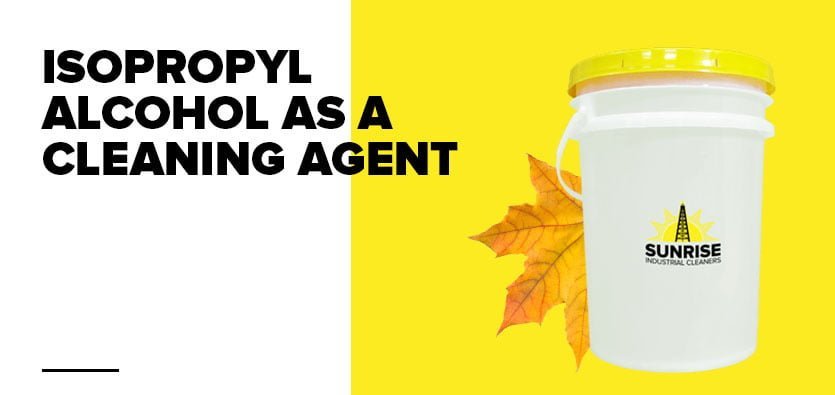
Isopropyl alcohol or IPA is the most common disinfectant used in various industries worldwide. Its different solutions, purity grades, concentration, and alcohol types produce disinfecting and cleaning products that rapidly destroy pathogens and harmful microbes, making IPA one of the most effective disinfectants and a universal cleaner.
IPA, especially in solutions between 60% to 90% alcohol with 10-40% water, is a potent antimicrobial against various bacterias, fungi, and viruses. Once alcohol concentrations drop below 50%, its effectiveness for disinfection also drops significantly. It is also important to note that, contrary to popular belief, a higher concentration of alcohol also doesn’t generate more desirable antimicrobial properties.
Below we discuss in detail how isopropyl alcohol makes a good cleaning agent.
How Does Isopropyl Alcohol Kill Microbes?
Isopropyl alcohol is a potent antimicrobial, killing microorganisms by inhibiting their growth and stopping their spread. It kills 99.99% of germs within 10-30 seconds of its application, making it one of the best sterilization tools.
IPA kills bacteria by damaging the cell wall of an organism. Water plays a crucial role in catalyzing this reaction and denatures the proteins of vegetative cell membranes — both water and alcohol work into the microorganism, causing its walls to burst and dissolve quickly. So, when you spray IPA on a bacteria prone hard surface, it will kill microorganisms present on it almost instantly.
Isopropyl alcohol is great for killing harmful microbes present on industrial machines, floors, cars, computers, keyboards, phones, and more. It is recommended to use a 90% IPA solution to clean electronic devices.
Why Is 70% Isopropyl Alcohol More Effective?
70% is the most effective concentration of isopropyl alcohol for disinfection. This is because the water content present in this concentration (30%) is essential to slow down the alcohol’s evaporation rate, causing it to stay in contact with the surface for a longer time. This increases the effectiveness of the solution to kill germs. In other words, since 70% IPA has more contact time, it has a better response rate in killing microbes. 70% of IPA solutions also penetrate the cell wall more efficiently.
Solutions > 90% IPA also kill the bacteria but require a longer contact time for disinfection. It also damages the microbe externally, forming a protective wall that shields the organism from further damage.
When Is 99% Isopropyl Alcohol Used?
99% isopropyl alcohol is an effective solvent and a cleaning agent for industries that produce water sensitive products where rapid evaporation of the agent and low water content is favorable and required. 99% IPA provides the lowest water content and is, therefore, commonly used to clean electronic devices and medical devices, circuit boards, computer chips, and more where immediate evaporation is required.
99% IPA concentration is best for cleaning residues, contrary to 70% alcohol, which is best for sanitizing surfaces. Rapid evaporation of the solution reduces shelf life but is more effective against sticky residues such as grease, oil particles, dirt, and grime.
Using Isopropyl Alcohol As A Surface Disinfectant
IPA forms one of the active ingredients in various cleaners used to disinfect commercial floors and surfaces. In these cleaners, IPA is combined with other chemicals that help the solution remain longer on surfaces and evaporate as quickly as possible. IPA in different concentrations is used to kill bacteria, spores, and viruses on different surfaces.
Using Isopropyl Alcohol As A Degreaser
As mentioned above, IPA is an effective degreaser and can be used to cut grease residues, which can then be easily wiped off the surface. Grease residues are hard to clean and often require more powerful cleaning agents to effectively remove them from surfaces. 99% IPA solution is excellent for cleaning grease and grime build-up.
At Sunrise Industrial Cleaners, we offer isopropyl alcohol in both 70% and 99% concentrations. For more information, visit our website or contact us.
